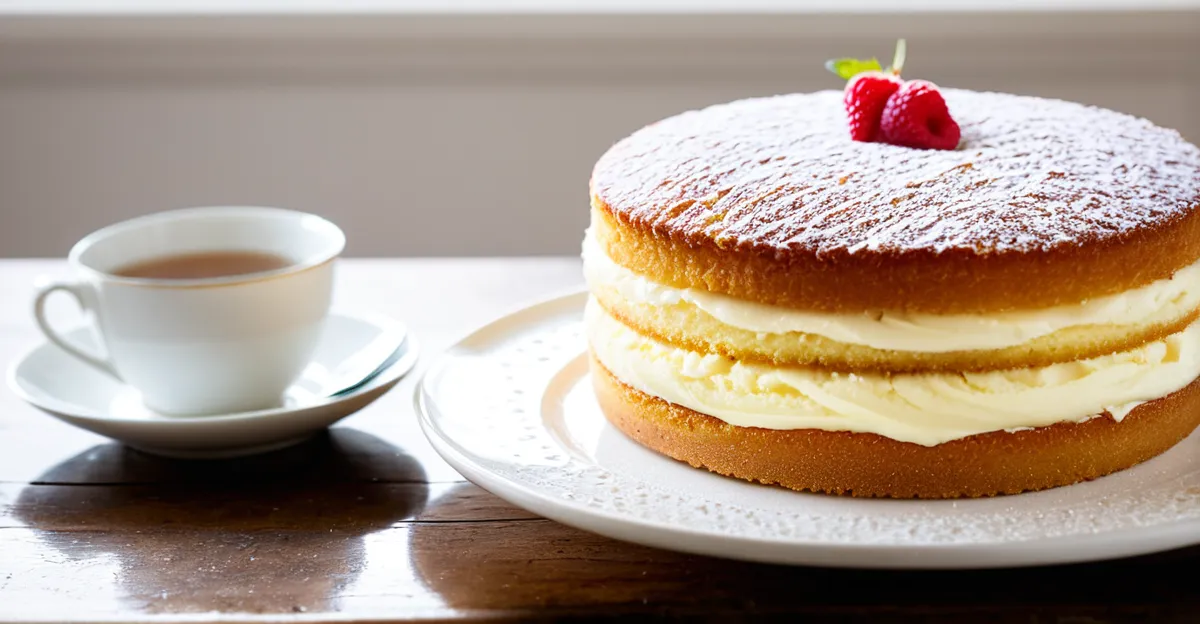Essential Techniques for a Fluffy Victoria Sponge Cake
Achieving a fluffy Victoria sponge cake hinges on mastering a few crucial baking secrets for sponge cake that directly impact texture and rise. First, precise ingredient measurements and selecting the right types are fundamental. Baking powder or baking soda, as raising agents, must be measured correctly to ensure proper leavening, which contributes significantly to the sponge’s airiness. Using too much or too little can result in a dense or flat cake, so accuracy here is vital.
When it comes to mixing, the method can make or break your fluffy Victoria sponge cake. For example, creaming the butter and sugar until pale and fluffy traps air crucial for lift. Folding in sifted flour gently preserves these air bubbles, a key baking secret for sponge cake that professional bakers swear by. Over-mixing or using a vigorous beat can knock out air and lead to a dense outcome.
Also read : How Can Traditional British Recipes Inspire Modern Chefs?
Temperature control is another cornerstone. Preheating the oven to the optimal temperature—usually around 180°C or 350°F—ensures the cake rises evenly and sets with a light crumb. Baking too hot causes the cake to rise rapidly and then collapse, while too low a temperature results in a heavy texture. Proper timing is just as essential; under-baking leaves a soggy center, while over-baking dries out the sponge. Testing for doneness using a clean skewer that comes out with moist crumbs (not wet batter) is the best way to confirm fluffiness without guesswork.
In summary, mastering the balance of ingredient precision, gentle mixing techniques, and vigilant oven temperature and timing forms the foundation of how to make sponge cake fluffy, turning out a tender and airy Victoria sponge every time.
Also read : How do you make a perfectly flaky fish and chips at home?
Key Ingredient Choices for Maximum Fluffiness
Finding the best components shapes your Victoria sponge cake success.
Choosing the right flour is fundamental for a fluffy Victoria sponge. Soft, low-protein cake flour is preferred over all-purpose flour because it produces a tender crumb by reducing gluten formation. Gluten develops when flour and liquid mix, creating a denser texture—thus, using cake flour keeps the sponge light and airy. Sometimes, a blend with some all-purpose flour can add structure without compromising fluffiness, but primarily opt for cake flour.
Raising agents play a crucial role in lifting the sponge. The most common agents are baking powder or a combination of baking soda with an acidic ingredient. These agents release gas bubbles during baking, causing the cake to rise. Precise measurement is key; too little results in a flat sponge, too much can cause it to puff excessively and then collapse. For a Victoria sponge, using a good-quality double-acting baking powder ensures consistent rise during baking.
Eggs are indispensable in sponge cakes—not only do they provide structure but they also trap air that contributes to volume. Using fresh, room temperature eggs is an expert tip to maximize fluffiness. Cold eggs incorporate less air, making it harder to achieve the desired rise. Beating eggs properly creates a foam that introduces air pockets; these air pockets expand during baking, producing that coveted light texture.
The choice of fat affects tenderness and moisture. Butter is traditional, valued for flavor and structure, but some recipes mix butter with oil for a softer crumb. Butter should be softened, not melted, to allow it to hold air when creamed with sugar. This aeration combines with trapped air from eggs, amplifying the sponge’s fluffiness.
In summary, the best ingredients for Victoria sponge involve selecting cake flour for lightness, precise amounts of raising agents for rise, fresh and room-temperature eggs for volume, and the right fat to balance moisture and texture. These choices create the foundation for a sponge cake that is airy, tender, and perfectly fluffy.
Expert-Approved Baking Tips and Professional Secrets
Discover trusted methods to achieve the perfect Victoria sponge
Professional baking tips emphasize gentle folding techniques to preserve the delicate air bubbles formed during mixing. This ensures the batter retains volume, which is critical to sponge fluffiness. Bakers often use a metal spoon or spatula to fold flour in gradually from the bottom upwards, rather than stirring vigorously. This technique prevents deflation, a key baking secret for sponge cake that transforms the texture from dense to airy.
Accurate temperature control is another core professional secret Victoria sponge bakers abide by. From mixing to baking, maintaining consistent temperatures safeguards the structural integrity of the sponge. For instance, using softened—not melted—butter maintains its aeration capacity during creaming. Oven temperature, typically held steady around 180°C (350°F), allows the cake to rise steadily without cracking or collapsing. Pro bakers monitor baking time closely, relying on skewer tests to confirm readiness just as the sponge forms a moist crumb without uncooked batter.
Timing in each stage directly influences final lightness. Eggs are beaten until just foamy before folding, trapping fine air pockets that expand during baking. Overbeating can destabilize the structure, while underbeating limits rise. Professional bakers often suggest resting the batter briefly before transfer to the oven, allowing bubbles to stabilize and improve rise. These expert secrets to making sponge cake fluffy show how precision and technique at each step yield the iconic airy Victoria sponge loved worldwide.

